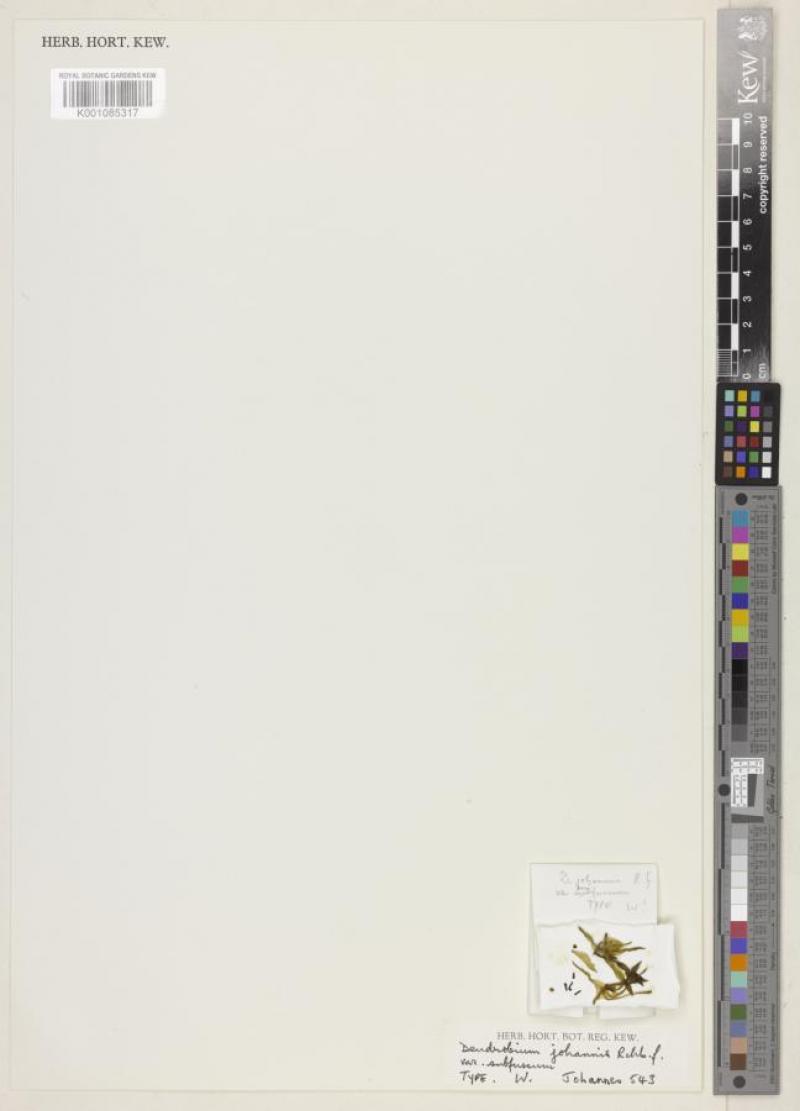Dendrobium trilamellatum
Also known as: The Three Lamellas Dendrobium or Dendrobium johannis var. semifuscum Cepobaculum semifuscum Dendrobium semifuscum The Fragrant Tea Tree Orchid The Large Tea Tree Orchid in the subfamily: Epidendroideae
Native to: Queensland - Australia
General Information
The Three Lamellas Dendrobium is a sympodial hot growing epiphytic free-flowering orchid belonging to the sub family Epidendroideae native to Australia.
Plant Description
Sympodial. Grows to 30-60cm. Each new growth has numerous thick lance shaped leaves that grow to 14cm long. Pseudobulbs grow to 3-60cm. The plant forms clusters over time
Flowers
Numerous long lasting, fragrant blossoms appear readily during Autumn and Spring
Fragrance
The orchid is fragrant.
Blooming Season
- Autumn
- Spring
Substrate(s)
- Bark
Care Notes
These orchids have a fine root system that can quickly die back if left dry for too long, but also does not like to be kept wet, so water regularly but ensure that the mix is dry before watering.
Fragrant:- IsFragrant
Climate
Grows at low elevations. Rainfall ranges from 3mm to 401mm per day, heaviest in August and lightest in March. Humidity ranges from 69% to 80%, highest in August and lowest in May. Temperature ranges from 22C to 31C, highest in June (24C to 31C) and lowest in January (22C to 27C).
Fertiliser
Apply liquid based fertiliser per recommended directions. They can benefit from a high phosphate fertiliser leading up to flowering season, followed by a high nitrogen fertiliser when new growth appears, and a balanced fertiliser in other times. These orchids can also tolerate slow release fertiliser applied 1-2 pellets per cup (250ml) of media.
Apply fertiliser regularly at half strength year round. Use a high Nitrogen fertiliser during Spring and Summer. Use a high Phosphorous fertiliser during Summer.Potting
These plants are quite forgiving and will do well repotted ever 2-3 years. The mix should be coarse, well draining, and allow space for air to move and for roots to grow.
Alternatively, these plants will also do well mounted to tree fern or cork slabs, or mounted to trees.
Best time for repotting or mounting the orchids is the end of winter when new growths start to appear. Avoid repotting during hot weather,
This plant does well mounted to Cork slabs.

